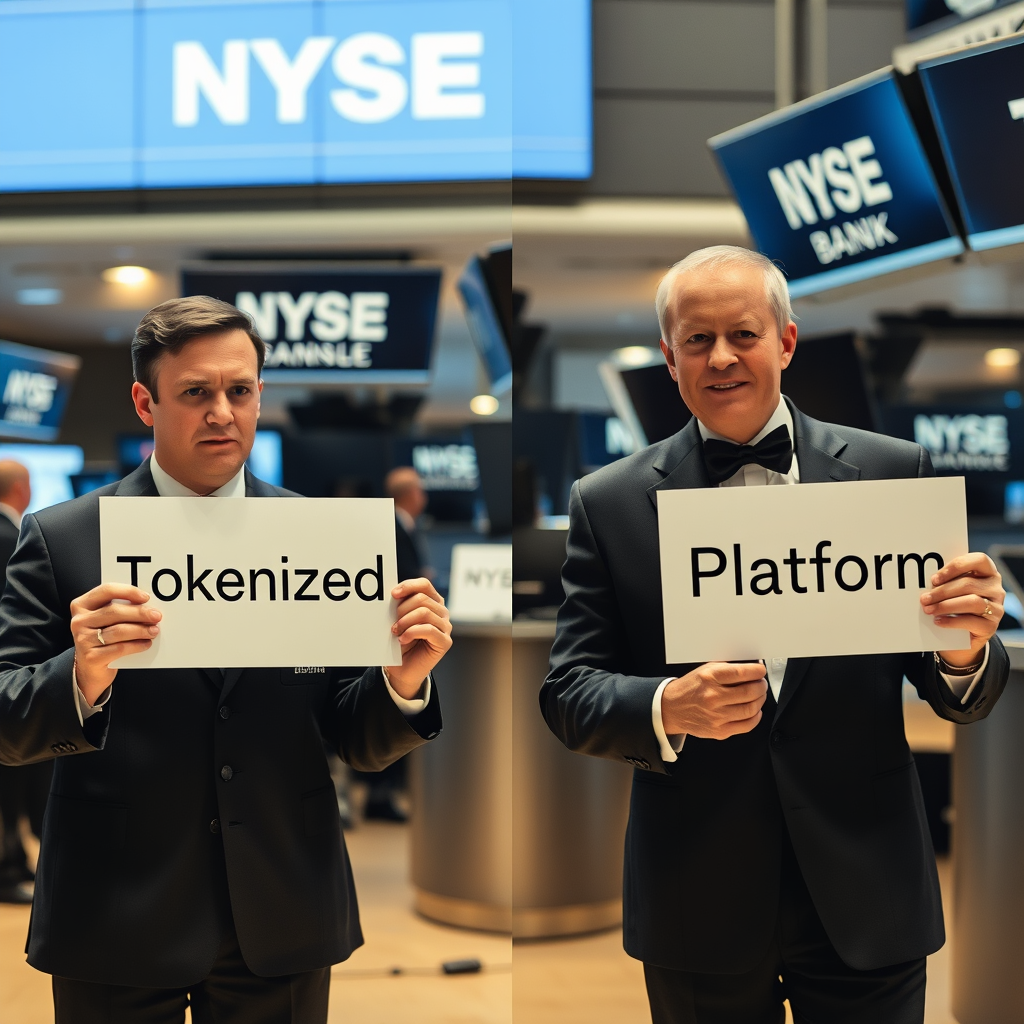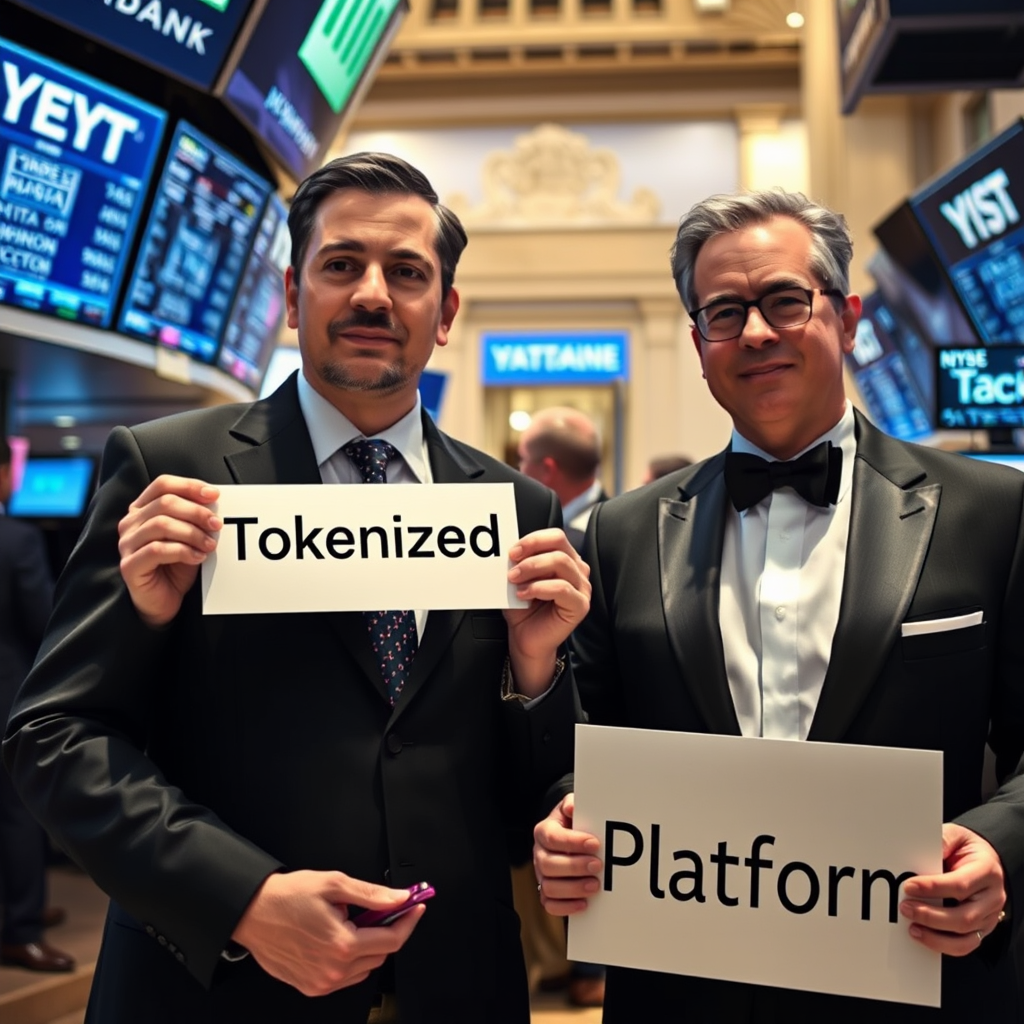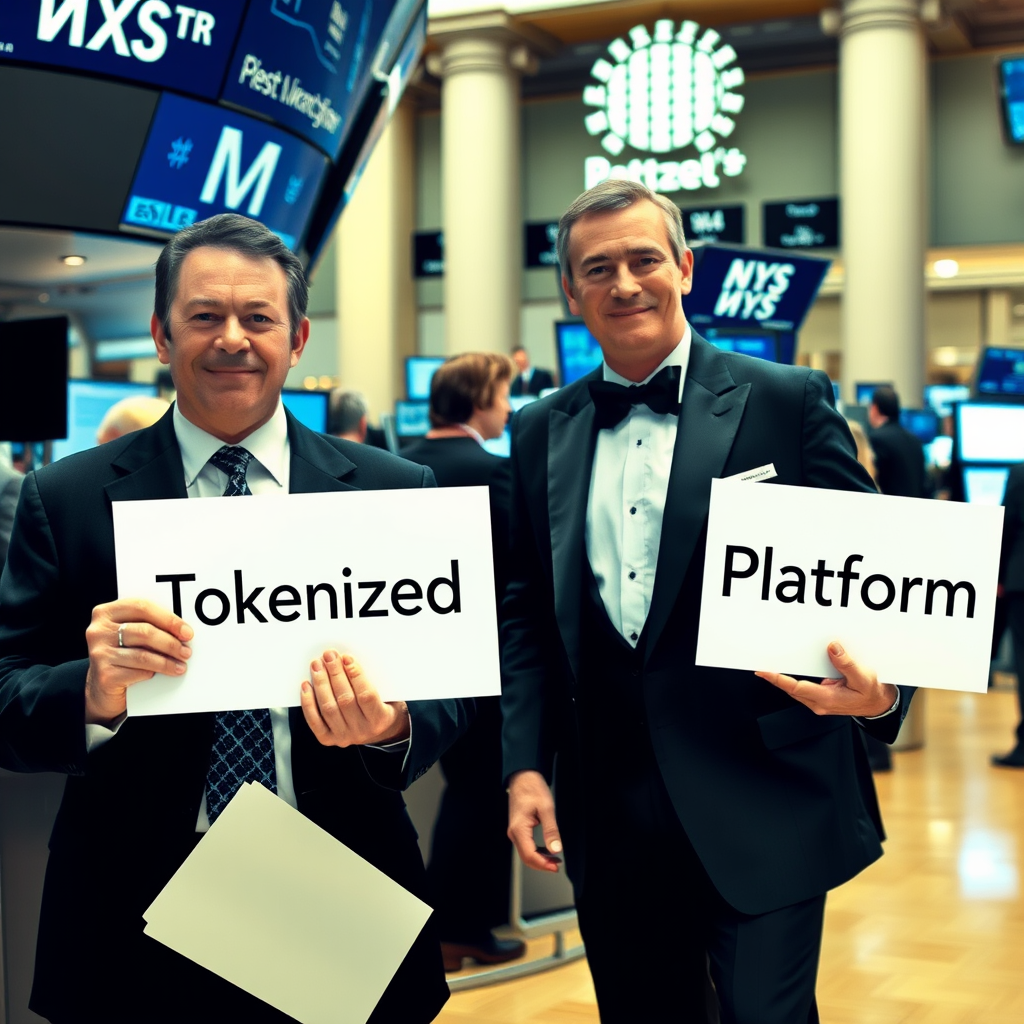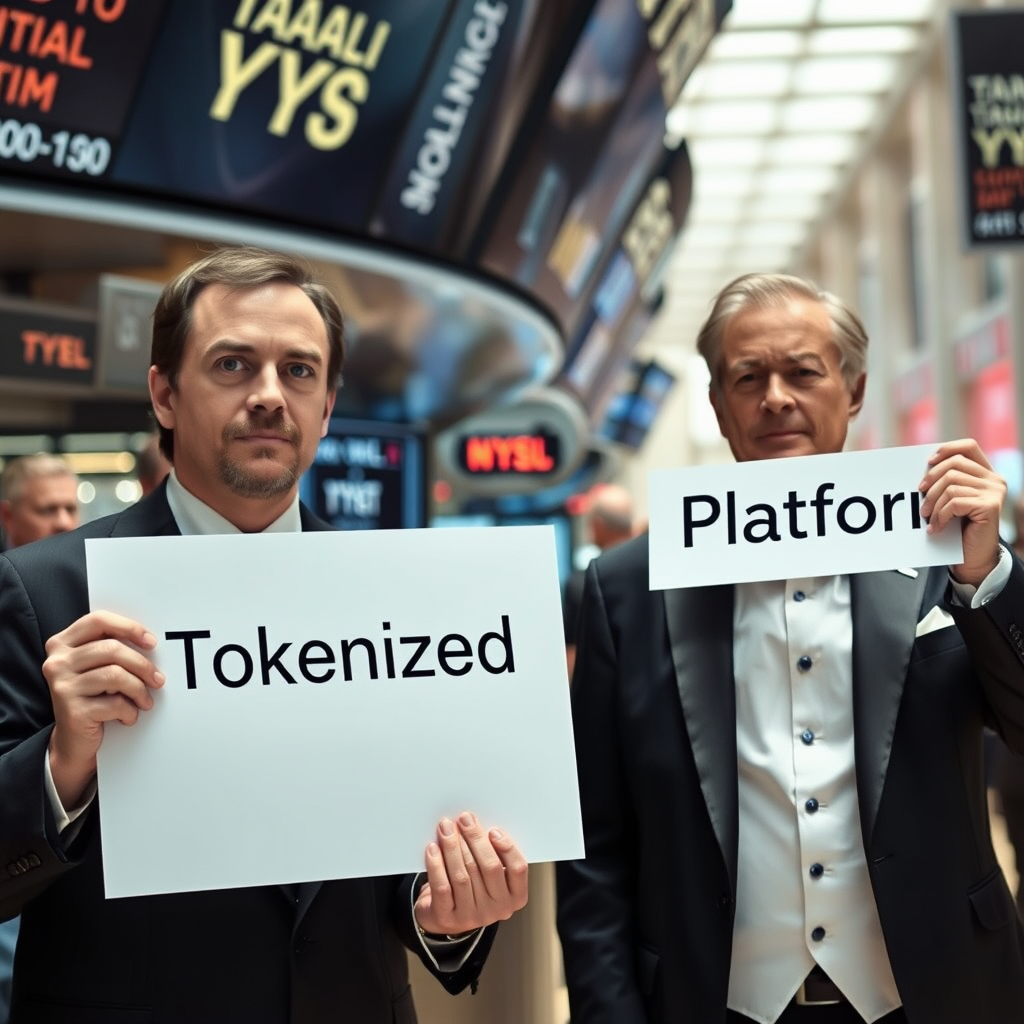Tokenized assets represent a burgeoning area within the realm of digital finance and are steadily becoming a pivotal component of modern financial systems. At their core, tokenized assets are digital representations of tangible or intangible assets, harnessed on a blockchain infrastructure. This process essentially involves converting rights to an asset into a digital token, which can then be freely traded or transferred on a tokenized platform like Ethereum. The underlying blockchain technology ensures that these transactions are recorded immutably and are tamper-proof, adding a high degree of security and transparency to the transaction process.
The types of assets that can be tokenized are diverse, covering a wide range of real-world assets (RWA) such as real estate, stocks, commodities, and bonds. This transformation leverages the decentralized nature of blockchain systems, allowing for fractional ownership of these assets, thereby democratizing access to investment opportunities that were previously inaccessible to a significant portion of potential investors.
The concept of tokenization opens up multiple avenues for asset liquidity, reducing barriers and expenses typically associated with the transfer and ownership of assets. Additionally, tokenized assets facilitate enhanced tradeability, driving a more globally connected financial ecosystem. By bringing traditional assets on-chain, blockchain-based tokenization provides significant cost efficiencies and increased speed of transactions, further promulgating its adoption in various sectors of the global economy.
Despite its numerous advantages, understanding the fundamental principles of tokenized assets is crucial for navigating this evolving landscape. It requires a nuanced comprehension of both technological underpinnings and financial implications. As businesses and individuals continue to explore this dynamic intersection of technology and finance, the promise of tokenized assets lies in their potential to reshape the architecture of the traditional financial marketplace.
The role of Ethereum in tokenization

Ethereum has emerged as a cornerstone in the realm of tokenized finance, providing a robust and dynamic platform for the development and management of tokenized assets. As a decentralized blockchain network, Ethereum facilitates the creation of smart contracts, which are pivotal in automating and securing transactions without the need for intermediaries. These smart contracts form the backbone of tokenization, allowing digital tokens to represent real-world value securely and transparently.
The flexibility of Ethereum’s platform encourages innovation, enabling developers to build decentralized applications (dApps) that can handle a myriad of tokenization use cases. Whether it’s real estate, equities, or other forms of RWA, Ethereum’s programmable infrastructure allows tokenization processes to be tailored to the specific needs of the asset, enhancing adaptability in a rapidly evolving digital landscape.
Moreover, Ethereum’s vibrant ecosystem supports a comprehensive range of standards for token issuance, such as ERC-20 and ERC-721, which have become industry benchmarks for fungible and non-fungible tokens respectively. This standardization not only ensures compatibility across different platforms but also simplifies asset interoperability, thus fostering a more cohesive digital marketplace.
Ethereum’s role in promoting liquidity is particularly significant. By enabling fractional ownership through tokenization, it widens the pool of potential investors, enhancing asset liquidity and accessibility. This democratization effect lowers entry barriers and opens new market segments to global participants, reflecting a shift towards more inclusive economic participation.
Further, the Ethereum blockchain provides unparalleled transparency, a crucial aspect of digital asset management that enhances trust and confidence among users. All transactions are immutably recorded on-chain, ensuring that tokenized platforms operate with high integrity and data accuracy.
Ethereum’s contribution to tokenization is profound, offering a comprehensive framework that supports the secure, efficient, and scalable deployment of tokenized economies. As the demand for digital assets continues to rise, Ethereum remains at the forefront, driving the transition to a decentralized financial environment where tokenized assets play a central role.
Advantages of tokenized finance
Tokenized finance offers a multitude of advantages that are revolutionizing the way financial transactions are conducted. One of the primary benefits is enhanced liquidity. By converting tangible and intangible assets into digital tokens, these assets become more easily tradable on a tokenized platform. This increased liquidity is particularly impactful for traditionally illiquid assets like real estate or fine art, allowing owners to sell portions of their holdings without having to divest entirely.
Another significant advantage is the reduction in transaction costs and time. Traditional financial transactions often involve numerous intermediaries, resulting in higher costs and longer settlement times. However, through blockchain technology, tokenized assets facilitate faster and more cost-effective transactions by automating processes with smart contracts and eliminating unnecessary middlemen. This not only enhances efficiency but also widens the scope for cross-border transactions.
Fractional ownership is a transformative aspect of tokenized finance, making investment opportunities more accessible to a broader audience. By lowering investment thresholds, individuals who previously could not afford certain assets, like real estate or high-value stocks, can participate in ownership. This democratization of investment paves the way for more diverse portfolios and allows greater market participation from retail investors.
Furthermore, tokenized assets improve transparency and security in financial dealings. Blockchain technology ensures that all transactions are immutably recorded, providing a clear and tamper-proof ledger that enhances trust. This transparency is instrumental in reducing fraud and ensuring compliance with regulatory requirements.
Moreover, the interoperability of tokenized assets across different platforms stands as a critical advantage, fostering a more cohesive and integrated digital financial ecosystem. Standards like ERC-20 and ERC-721 on Ethereum ensure that tokens can be easily exchanged and utilized across various applications, enhancing usability and functionality in the digital economy.
In essence, tokenized finance not only increases the accessibility and inclusiveness of financial markets but also streamlines processes, leading to unprecedented efficiency and transparency. As this technology continues to evolve, it holds the potential to redefine the infrastructure of the global financial system, ushering in an era of seamless and equitable financial interaction.
Challenges and considerations

The integration of tokenized assets into the mainstream financial system poses numerous challenges and considerations that stakeholders must address to harness the full potential of this innovation. One of the most pressing challenges is regulatory compliance. Since blockchain technology and digital assets often operate in a cross-border environment, navigating the patchwork of regulatory frameworks across different jurisdictions becomes a complex task. Each region may have distinct requirements regarding securities, taxation, and anti-money laundering, complicating the legal landscape for tokenized platforms.
Additionally, the nascent nature of tokenized finance brings about technological hurdles, particularly concerning scalability and interoperability. As the demand for blockchain platforms like Ethereum grows, scaling solutions must be developed to handle increased transaction volumes without compromising speed or security. Furthermore, ensuring interoperability between various blockchains and traditional financial systems is critical for creating a seamless transaction experience. This includes developing standardized protocols that allow for smooth communication between different blockchain networks and legacy systems.
Another consideration is the security of digital assets. Despite the advanced security features of blockchain technology, tokenized platforms remain susceptible to cyber threats, smart contract vulnerabilities, and insider malfeasance. The potential for hacking and fraud calls for robust security measures, including the development of advanced encryption methods, regular audits, and rigorous testing of smart contracts to mitigate risks and protect investors’ interests.
Market volatility also represents a significant challenge for tokenized assets. The value of digital assets can be subject to dramatic fluctuations, influenced by market speculation and regulatory news. This volatility can deter risk-averse investors and pose challenges to establishing stable economic models within the tokenized ecosystem.
Furthermore, educating market participants about the intricacies of blockchain technology and tokenization is essential for broader adoption. Many investors and institutions are still unfamiliar with the operational dynamics of tokenized assets, leading to skepticism and apprehension. Comprehensive educational initiatives and transparent communication are vital to fostering understanding and trust in the transformative potential of this financial innovation.
Addressing these challenges requires collaboration among regulators, technologists, and market participants. By forging cohesive strategies that balance innovation with robust regulatory oversight and technological advancement, the global financial landscape can effectively accommodate the rise of tokenized assets, ultimately leading to a more efficient, transparent, and inclusive economic environment.
Future trends in tokenized platforms

As the landscape of global finance continues to evolve, tokenized platforms are poised to play a significant role in shaping the future of digital assets. These platforms, such as Ethereum, are at the forefront of innovation, paving the way for advanced applications of blockchain technology that extend beyond the current paradigms of tokenized finance. One of the key trends is the integration of artificial intelligence (AI) with tokenized platforms, which will likely enhance decision-making processes and streamline financial operations. By harnessing AI, tokenized platforms can offer predictive analytics, automated compliance checks, and personalized investment strategies, further solidifying their position in the financial ecosystem.
Additionally, the growing emphasis on decentralized finance (DeFi) is expected to drive the expansion of tokenized platforms. As DeFi applications continue to gain traction, there will be an increasing demand for platforms that can support complex financial services such as lending, borrowing, and insurance without intermediaries. This shift towards decentralization is likely to democratize access to financial services, creating new opportunities for both individual investors and institutions seeking to tap into the vast potential of blockchain-based finance.
Another trend to watch is the tokenization of real-world assets (RWA). As more industries recognize the benefits of tokenization, the range of assets being digitized on blockchain platforms will expand, including everything from intellectual property rights to carbon credits. This diversification will not only increase the liquidity and accessibility of these assets but also enhance global participation in a wider array of investment opportunities.
The cross-platform interoperability of tokenized assets is anticipated to improve significantly. With advancements in blockchain communication protocols, users will experience seamless interactions across various blockchain networks, enhancing the overall efficiency of tokenized transactions. The development of solutions that enable interoperability will be crucial in building a connected ecosystem where digital assets can move freely and efficiently.
Furthermore, the regulatory landscape surrounding tokenized platforms is expected to mature, providing clearer guidelines that encourage innovation while ensuring financial stability. As regulators continue to grapple with the challenges posed by digital assets, collaborative efforts between policymakers and industry leaders will be essential in establishing frameworks that protect investors and promote sustainable growth in the tokenization market.
The future trends in tokenized platforms highlight a shift towards more sophisticated and integrated digital finance solutions. By embracing technological advancements, enhancing regulatory clarity, and expanding the range of tokenizable assets, these platforms will inevitably drive the transformation of traditional finance into a more decentralized and inclusive global economy.






